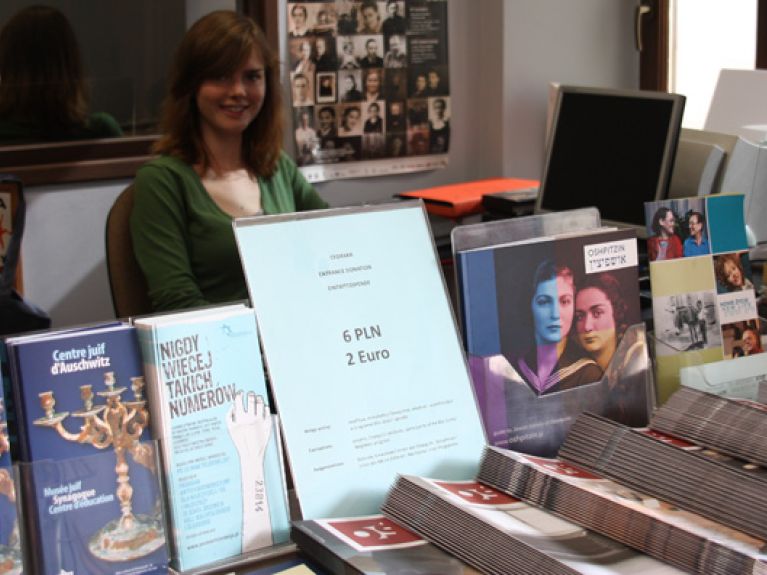Remembering the victims of the Holocaust
Young people perform voluntary service in memory of the victims of the Holocaust. Luisa Lehnen spent a year working in a museum near Auschwitz. An interview.

It is a special place for a voluntary social year: Luisa Lehnen, history student in Freiburg, spent a year living and working at the Jewish Centre near Auschwitz. In an interview the 21-year-old woman from Mainz explained what attracted her to the location and which encounter most impressed her.
Ms. Lehnen, after completing your university entrance exams in 2010 you spent a year living and working in Oświęcim, Poland. The town is two kilometres from Auschwitz. How did you react when you discovered that the Action Reconciliation Service for Peace (ASF) was going to send you to the place where more than a million people were killed in the German concentration camp between 1942 and 1944?
I didn’t know Oświęcim itself. At first, I had to take a deep breath when I found out that Auschwitz was in the immediate vicinity. However, I was not meant to work directly in the Auschwitz Museum – in other words, the former concentration camp – but at the Jewish Centre. The project soon won me over. The Jewish Centre is an educational centre for the victims of the Holocaust. It contains a small museum and a synagogue.
Why did you want to support the ASF?
I like the profile of the initiative very much because the projects deal not only with education, but also with history, and I can identify with that. The initiative takes responsibility, campaigns against racism and homophobia, for example, and engages in public education – in a modern way.
What was your everyday work at the museum like?
I guided young people from Germany and other countries through the museum and showed them that Auschwitz is more than a synonym for a former concentration camp. Before the outbreak of war in 1939 half of the inhabitants of Oświęcim were Jewish – and lived with the Christians largely in peace.
Isn’t it depressing to be constantly confronted with the terrible past?
At the beginning I wondered how I was going to live and work for a whole year at a place where so many people died in agony. Then I noticed that the terror of Auschwitz was simply part of my everyday life there. It’s similar for the inhabitants of Oświęcim.
What do you especially like to remember?
The March of the Living, a commemorative event on Israeli Holocaust Remembrance Day. In 2011 a group of young Jewish people from Germany took part. First they sang songs in the small synagogue at the Jewish Centre and then we walked with a large number of people from Auschwitz to the former Birkenau death camp. That was a special, binding moment.
What do the inhabitants of Oświęcim think about your work?
They see it as a positive sign that young people from Germany work for one year in Auschwitz and represent Germany. That is my impression. During my time in Oświęcim I was an ambassador in two directions: I increased my family and my friends’ understanding of Poles and presented a modern picture of Germany to the Poles.
German Day of Remembrance for the Victims of National Socialism on 27 January
International Holocaust Remembrance Day on 27 January
